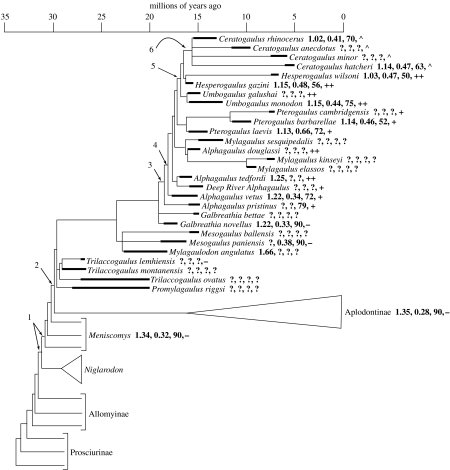Figure 1.
Phylogeny of the Mylagaulidae. Heavy lines indicate known stratigraphic ranges of taxa; lighter lines indicate ghost lineages or inferred stratigraphic ranges. The relationships with the remainder of the Aplodontoidea are shown schematically without stratigraphic ranges. Numbers following the names of taxa are, in order, the ratio of skull length to skull width (which decreases in head-lift diggers), the ratio of the height of the occipital plate to the length of the skull (which gets larger in head-lift diggers), the angle between the occipital plate and the angle of the palate (‘Angle of occipital’; Korth 2000), which gets smaller in head-lift diggers) and the form of the nasal bones, being (−) thin, (+) thick, (++) with boss or (^) with horn. The arrows indicate the points in aplodontoid evolutionary history at which features putatively relevant to fossoriality evolve. (1: Shortening of skull, trabecular structure appears in wall of bulla; 2: broadening of occipital plate; 3: thickened nasal bones; 4: anteriorly tilted occipital plate, increased lower incisor hypsodonty; 5: nasal bosses; 6: large nasal horns.)

